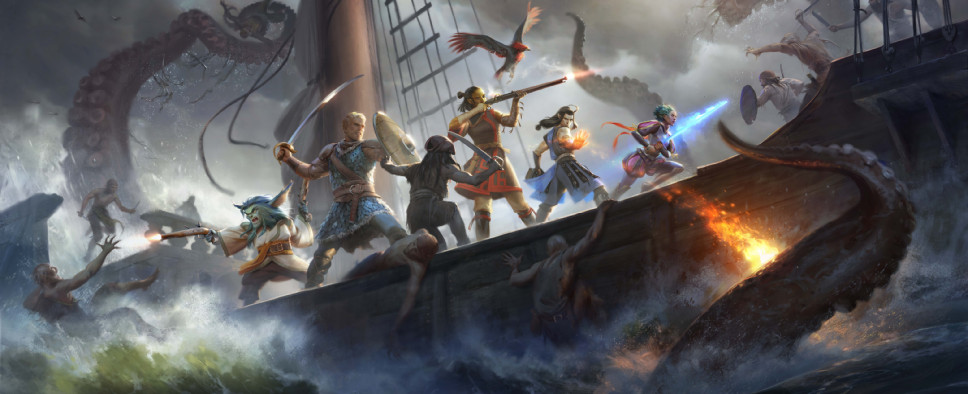Obsidian Entertainment Interview on Worldbuilding
-
Category: News ArchiveHits: 3076

If you're someone who likes their games to have intricately crafted worlds and deep lore, then you will probably enjoy reading this PCGamesN interview with Obsidian Entertainment's designer Alex Scokel that for the most part revolves around Obsidian's worldbuilding techniques. Here are a few sample questions:
Say you’re starting work on a new Obsidian game. When does worldbuilding begin?
Alex Scokel, designer: It depends on the project. Sometimes you have a specific goal you’re working towards, and worldbuilding is the answer to that goal. Sometimes you’re building an experience where the worldbuilding is very important to the basic systems of gameplay. It can be happening to an extent concurrently with the initial designs.
It can vary. Part of that involves how important the narrative is to the experience – and at Obsidian it’s often quite important. But it never really ends. The worldbuilding continues even after the game is locked down and out the door.
How early in production do you lock down the lore?
We often do a lot of preparatory work. For example, on Pillars of Eternity II: Deadfire, we were designing the culture of the Deadfire – the history and factions that exist in the area – before full production began. But all that stuff is pretty flexible until the game is out the door. You don’t want to paint yourself into a corner – things don’t necessarily work as well in-game as in theory.
When you talk about the design bible, you have the sense that it’s this immutable thing that every idea is in service to, and that’s not it at all. We actually have an internal wiki system, essentially. It’s very editable, and it’s served us well in terms of making sure we don’t get too married to ideas we haven’t already shipped. Once an idea is in the game and out in front of people it’s much more solid. It’s not something we want to edit because that would undermine the player experience.

